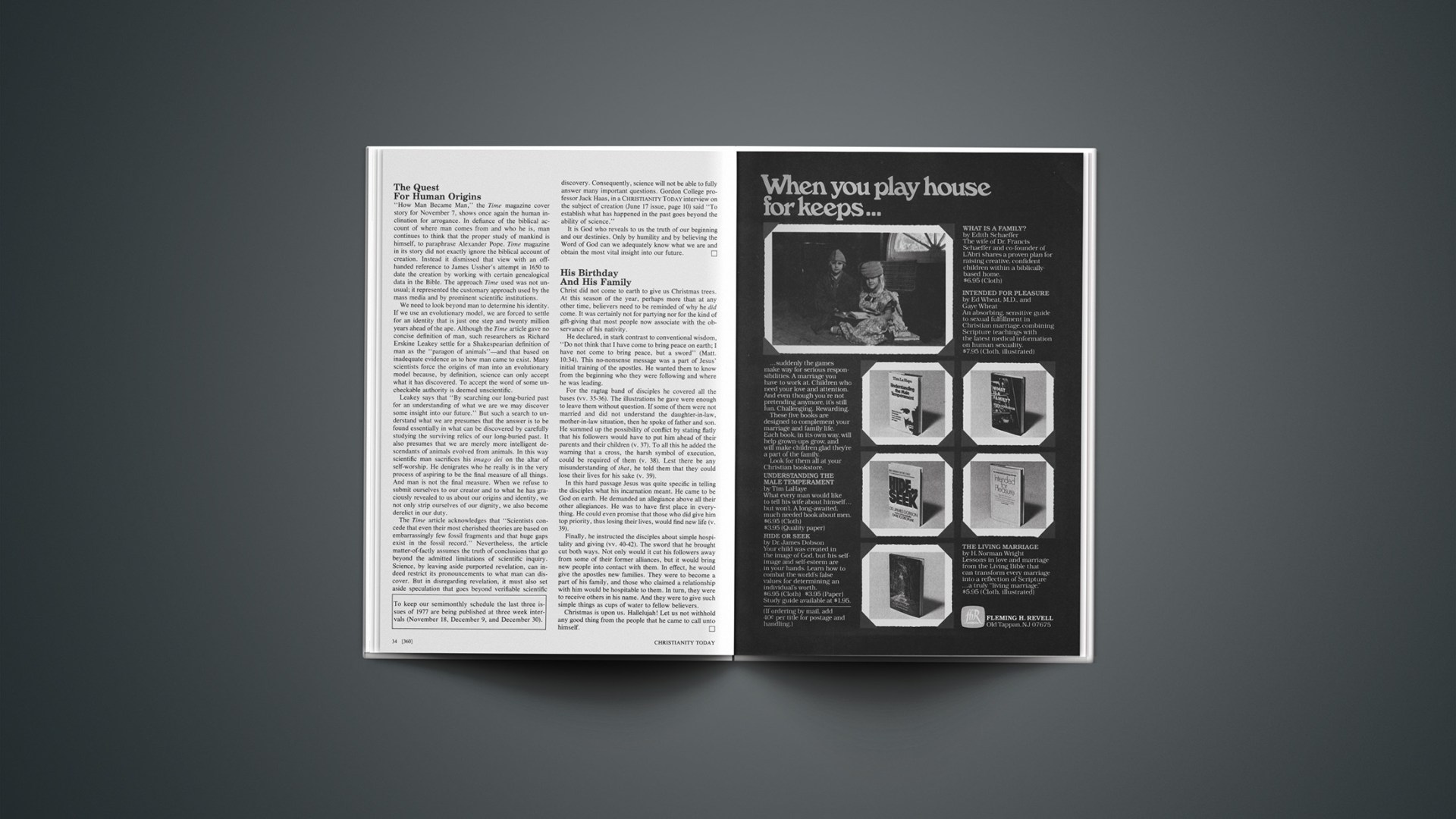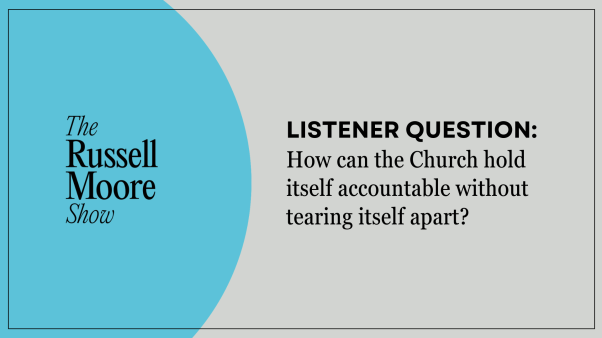Is Any Religion True?
Religions in Four Dimensions: Existential and Aesthetic, Historical and Comparative, by Walter Kaufmann (Reader’s Digest [dist. by Crowell] 1976, 490 pp., $30 hb, $8.95 pb), is reviewed by Richard Fox Young, doctoral candidate in Oriental Studies, University of Pennsylvania, Philadelphia.
Walter Kaufmann, the well-known Princeton philosopher, claims to have done something more original in this book than anything yet done by other writers on religions, that is, present readers with material on not just one but four dimensions of religions: the existential, aesthetic, historical, and comparative. But Kaufmann neglected to inform readers that a fifth dimension is prevalent in the book, the evaluative (not to be confused with the comparative). His “unexamined absolute,” which he deplores in others, seems to be himself, not a specific religion or philosophy. It is his methodology, even more than his ungracious allegations against Christianity, that disturbs me. Because the Reader’s Digest is the publisher, the need for a review is even more compelling.
The book does have a promising beginning. Kaufmann deplores our paralyzed age, which, when confronted with resurgent Oriental religions, prefers to sidestep the real issue, viz., truth, saying, “One refuses to see the major religions as alternatives that challenge us to make a choice. Yet Moses and Jesus, Zarathustra and Muhammad presented this challenge in the clearest terms, and we cannot begin to understand the religions of the East as long as we shut our eyes to the ways in which most teachers and scriptures condemn some ways and recommend others” (p. 13). Although Kaufmann does think that the differences between religions are real, not apparent, he does not make it clear to readers that decisions about the truth of these differences are vital to their existence rather than of mere academic interest. He has taken great pains to demonstrate that no particular conception of deity is universal, but his sentimental, yet despairing conclusion undercuts the necessity to choose between conflicting religious concepts: “Now the gods, too, have died, leaving us songs and music. There are those who try officiously to keep the gods alive in a state of suspended animation; but they do neither them nor us a favor. A century ago some people thought that once the gods were dead all would be well. We know better” (p. 456). After that, only stubborn academics could continue to examine religions; most readers will forget the whole question of truth once they shelve the book.
Kaufmann’s chapters on Judaism are probably the best. He is an unpredictable thinker, and amidst the scissors work of literary criticism I was surprised to find a vigorous defense of Moses’ authorship of the Decalogue. Unfortunately for readers, prophets such as Amos and Hosea are depicted only as proponents of social reform rather than as “announcers” also. His selection of subjects suggested to me that readers are presented more with what Kaufmann himself likes in Judaism (he is a former Lutheran who converted to Judaism) rather than with how Judaism has been conceived over time by its major groups of believers.
A central Hindu concept, maya (illusion), which is used so much by this generation that it is now included in Webster’s, is unfortunately misrepresented: “… the Indian mystic says that the world of diversity is less important and in that sense ‘illusory,’ while the unity which he experiences sometimes with great intensity is infinitely more important and in that sense ‘real’ ” (p. 223). But maya is only secondarily a doctrine of value. Hindu doctrines frequently do not sharply distinguish between epistemological and metaphysical concepts. Epistemologically, maya is the doctrine that all empirical phenomena are false (i.e. sublated by knowledge of Brahman); metaphysically, it is the doctrine that nothing besides Brahman exists. Strictly speaking, this is non-duality, not pantheism. The attitude mentioned by Kaufmann springs from this conception, but he has shifted the emphasis and thereby softened the radical purport of maya.
The book’s methodological flaws are most vivid in the comments on Christ: “… according to the Gospels, Jesus believed … that the end of the world was at hand; he believed … that the mass of men was headed for eternal torment; and there is no evidence that this conviction troubled him” (p. 116); “… [Jesus] takes pains to keep people from being saved” (p. 118); “It seems plain that the Buddha was worlds removed from the shrillness, the vituperation, and the hatefulness that the evangelists associated with Jesus” (p. 307). So hollow are these poisonous allegations that it would be foolish to attempt to refute them. What disturbs me most is that Kaufmann’s presentation is based more on the conceptions of Christianity’s detractors, like Voltaire and Russell, than upon Christianity’s adherents, which one would expect such a book to reflect. It would have been a better book if Kaufmann had followed the basic presupposition of the study of religions suggested by Brede Kristensen that “Every religion ought to be understood from its own standpoint, for that is how it is understood by its own adherents” (The Meaning of Religion, 1971, p. 6). However, Kaufmann has flagrantly violated this principle and his book is therefore an unreliable one.
Yet Kaufmann had correctly perceived that the existential nature of other religions cannot be properly disclosed by mere research. His remarkable photographs help readers overcome the limitations of definitions of what a Hindu or a Buddhist is. But without being told about Hinduism or Buddhism in terms of believers themselves, how can even these breathtaking photographs evoke intelligent empathy?
It would certainly be a mistake to think that Kaufmann’s book is just methodologically unsound. He finds Christ abhorrent because he does not take sin seriously enough. But what disappoints me most about the book is that like so many others, it conveys the author’s own concept of a religion, which, if read by one of its own believers, would be unrecognizable. Christians, especially, require more reliable books on other religions if we are to properly carry out the task of “Elenctics,” i.e., to call men to responsibility, as J. H. Bavinck says, for what they have done with God.
Facing Up To Doubt
In Two Minds, by Os Guinness (InterVarsity, 1976, 299 pp., $4.95 pb), is reviewed by James M. Houston, principal, Regent College, Vancouver, British Columbia, Canada.
Os Guinness, formerly on the staff of L’Abri Fellowship in Switzerland, has written a powerful book. It is the fruit of much counseling with young people. Through it throbs the mind of a deeply reflective author, writing with the sensitivity of personal experience. It is perhaps significant that a former associate of Francis Schaeffer, the apostle of contemporary evangelical certainty, should provide us with this important study on doubt, a subject that our evangelical culture dare not suppress, but must deal with openly and with honesty.
“Christianity places a premium on the absolute truthfulness and trustworthiness of God, so understanding doubt is extremely important to a Christian,” says Guinness. Moreover, argues the writer, the need to choose among the variety of alternatives and the need to prepare for future testing of the Christian in our world make it necessary for the Christian to take his doubts seriously. The unreflective Christian tends to repress doubt or to view doubt as an enemy, so that those who could be helped most by this book may not read it. Popular Christian literature, alas, generally swings with the cock-sure or those anxious for easy certainties. But those who follow Guinness’s closely argued book and reread it reflectively will be rewarded by the friendship of a good book, whose primary objective is to deepen and mature faith in God.
The author divides his study into three parts: the nature of doubts, an outline of seven categories of doubt; the care and counsel of those in doubt; and finally two specific types of doubt. The author distinguishes doubt from unbelief, the former as only the suspension between belief and unbelief, the latter as willful refusal to believe or to disobey deliberately. Three basic misconceptions of doubt are described: that to doubt is wrong; that doubt is a problem of faith not of knowledge; and that doubt is something to be ashamed of. Then he describes six categories of doubt resulting from the following causes: ingratitude; a faulty view of God; weak foundations; lack of growth; unruly emotions; and fearing to believe. The writer then devotes three chapters on counseling the doubter, in listening, in discussing the nature of the doubts, the appropriate response, and the need to warn against critical doubts. In conclusion he deals with doubts arising from insistent inquisitiveness and from impotence or the spirit of resignation.
The book is an excellent presentation of the pathology of doubt. What is less well described is the therapeutic values of doubt. Doubts at the bottom of the heart are deadly. Doubts at the top of one’s head are essential for any exercise of thought or judgment. Doubt can also relieve us of the excess baggage of over scrupulousness, of unexamined beliefs and customs. Doubting doubt is an emotional entendre that is necessary for certain temperaments. Indeed, the author could have related doubts to temperamental traits of personality. What the writer is most concerned about is the exercise of doubt as an obstacle to the deepening of Christian life—to those doubts that are traceable not merely to the working of the mind, but to the obstinacy of the mind. For doubt that is emotionally based is not intellectually soluble. It is a symptom of the deeper issues of pride, of insensitivity, of non-commitment. Faith undercuts the emotional need of doubt.
Os Guinness has written a book that will help the needs of young people especially. It prepares them for the critical transition from a sheltered faith and the intellectual seductions of, though perhaps unexamined, non-commitment to anything. For many scholars boast of their scholarship as just that, non-commitment as a way of life. I recommend In Two Minds as a book every thoughtful Christian should possess and read carefully.
Excitement For Missions
Don’t Go Overseas Until You’ve Read This Book, by Neil Gallagher (Bethany Fellowship, 1977, 123 pp., $2.95 pb). The Great Commission for Today, by David M. Howard (InterVarsity, 1976, 128 pp., $2.25 pb), Don’t Just Stand There!, by Martin Goldsmith (InterVarsity, 1976, 128 pp., $2.25 pb), A Theology of the Church and Its Mission: A Pentecostal Perspective by Melvin L. Hodges (Gospel Publishing House, 1977, 185 pp., $3.95 pb), Mission in Ferment, by Russell A. Cervin (Covenant Press, [3200 W. Foster, Chicago, Illinois 60625], 1977, 128 pp., $3.50 pb). Declare His Glory Among the Nations, edited by David M. Howard (InterVarsity, 1977, 162 pp., $3.95 pb) and Evangelical Missions Tomorrow, edited by Wade Coggins and E. L. Frizen, Jr. (William Carey, 1977, 194 pp., $5.95 pb), are reviewed by Cecil B. Murphey, pastor, Riverdale Presbyterian Church, Riverdale, Georgia.
Don’t Go Overseas Until You’ve Read This Book contains a chapter I wish I’d written and another chapter I wish I’d read before going overseas. Right from the start, Gallagher warns us: be prepared to be misunderstood. And when he writes on the cultural shock we can expect, this was for me the high point in the book. Since I can’t make this book mandatory reading for every Christian who applies for a passport I would urge you to at least get this book into your church library.
Don’t wait until you’re ready to be a missionary or have a friend who becomes one before you read The Great Commission for Today. Howard begins with a good look at the passages in each of the four Gospels and Acts that cite the great commission. He contends that Jesus actually gave the mandate at least three times. He also sets the great commission in its context and shows how the wording relates the message of that particular book. The result: not only a fine piece of exposition done in such a way that the material is neither dry nor purely didactic, but replete with illustrations from the mission fields. Howard makes a heavy point that the great commission is an imperative, not an option. He is readable and brief; the book ought to be widely circulated.
Martin Goldsmith’s Don’t Just Stand There! offers a readable and theological primer on missions. Starting with the Old Testament and working through the New, he gives the basis for missions—because it’s God’s will. Although the book is not lengthy you might want to just skim the early parts of it if you’re already aware of what’s happening in missions today. But don’t put this down as purely a primer. I’d also call it a practical book on missions. Goldsmith does a good job of assessing missions and social involvement, giving helpful insight and a fair analysis for anyone interested in the mission field.
In A Theology of the Church and Its Mission: A Pentecostal Perspective, Hodges documents that 65 per cent of all Protestants in Latin America today are Pentecostal. Why this phenomenon? The Pentecostalists, this book asserts, endeavor in both preaching and experience to give the Holy Spirit the place they feel the New Testament gives him.
Although many people will disagree with his emphasis on the Spirit, they will agree with most of the rest of this book. I liked it because Hodges produces exactly what he purports to do: he writes a theology of the contemporary church and its mission.
Hodges provides an excellent summary of the current thinking in the area of social activity and then concludes with an examination of the “theology of liberation,” which is being widely talked about these days (and which most of the other books either don’t mention or only give it the briefest nod).
I found it interesting to read a positive approach to missions from an unapologetic Pentecostal missologist who knows his material. Once snubbed by major evangelical missions, Pentecostals have earned the right to be heard if for no reason other than their phenomenal growth.
Although written primarily from the perspective of the Evangelical Covenant Church, Cervin’s Mission in Ferment yells must for anyone who wants a realistic view of contemporary missions. What about continuing to send missionaries to the emerging Third World nations? Can white missionaries still minister effectively in black Africa? Can evangelicals cooperate in the ecumenical movement? This book is well-written, well documented, and the writing carries the conviction and authority of a man who knows what he’s saying. Cervin nicely covers the theology of liberation, humanization, and what he calls “contextualization.” Each chapter is prefaced with provocative questions, which he attempts to answer. If you really want an overview of missions today by a man who knows what’s going on, buy this compact and popularly written book.
Declare His Glory Among the Nations is different from those already mentioned. Edited by David Howard, this thick paperback contains addresses by missionaries, students, and others to the 1976 Urbana Conference. Although each article carries the thrust of missions, Howard includes several essays not specifically missionary in scope. John Stott has four theological chapters on the biblical basis of declaring the glory of God. Other well known people include Elisabeth Elliott, Billy Graham, and Festo Kivengere. This is probably the most inspirational book here reviewed and the presentations are all extremely well done.
Evangelical Missions Tomorrow is an insider’s book, written primarily by mission leaders about the state of world missions and what they see in store for the future. Although I don’t expect this book to find a wide audience, the material is enlightening, if a little technical. The articles are edited from papers read at a joint conference of the Interdenominational Foreign Mission Association, the Evangelical Foreign Missions Association, and the Association of Evangelical Professors of Missions, held during the fall of 1976. Unless you’re heavily involved in missions, you’ll probably pass this one by—and yet it contains several excellent articles that could stand alone and be reprinted in magazines.
Briefly Noted
VALUES EDUCATION. Development of values and morality does not come automatically even in schools under Christian auspices. The need for Christians to try to influence any secular values curricula is obvious, but evangelical publishers do not seem to be bringing out many books to help. Paulist, a major Catholic publisher, issued a collection of essays, edited by Thomas Hennessy, a Jesuit, Values and Moral Development (234 pp., $7.95 pb), a monograph by Brian Hill, president of the Center for the Exploration of Values and Meaning, The Development of Consciousness: A Confluent Theory of Values (268 pp., $5.95 pb) and a programmed learning workbook on understanding Kohlberg’s theories by Susan Pagliuso, Understanding Stages of Moral Development (151 pp., $5.95 pb). Education for Justice: Pedagogical Principles (Orbis, 145 pp., $4.95 pb) is by Brian Wren, a British churchman and socialist. He focuses on methods of teaching youth and adults to be sensitive to such problems as famine and racism. Other viewpoints need to be represented with this kind of book.
SECTS. Information on aggressive proselytizing groups is sometimes needed in a hurry. The following books should be in seminary and Bible college libraries, and many church libraries will want some of them: The Broadway to Armageddon by William Hinson (Religion in the News [Stahlman Bldg., Suite 330, Nashville, TN 37202], 234 pp., n.p. pb) is by a former minister in Armstrong’s Worldwide Church of God; What Is the Baha’i Faith? by William McElwee Miller (Eerdmans, 151 pp., $3.95 pb) is an abridgement of a 1974 book; They Followed the Piper by Lee Hultquist (Logos, 162 pp., $2.95 pb) is how one girl was won back from the Children of God; The American Children of Krsna by Francine Daner (Holt, 118 pp., n.p. pb) is an anthropological study of the Hare Krishnas; The God-Men: Witness Lee and the Local Church by Brooks Alexander, et al. (Spiritual Counterfeits Project [Box 4308, Berkeley, CA 94704], 80 pp., 95¢ pb) is on an aggressive outgrowth of the ministry of the well-known writer Watchman Nee; TM: Ado About Nothing by William Petersen (Keats, 106 pp., $1.95 pb) and Transcendental Hesitation by Calvin Miller (Zondervan, 185 pp., $1.95 pb) expose the Hindu basis for the professedly secular technique.
CHRISTIAN TESTIMONY IN ASIA. Although it is by far the most populous and least Christian of the continents, Asia and the adjacent islands are nevertheless the scene of considerable Christian activity. For popularly written accounts of some of what God has been doing in Asia we mention the following titles: Anointed for Burial by Todd and DeAnn Burke (Logos, 259 pp., $2.95 pb) about evangelism in Cambodia shortly before the tragic conquest of that country by brutal Marxists; Indonesian Revival: Why Two Million Came to Christ by Avery Willis, Jr. (William Carey, 263 pp., $6.95 pb), a documented study of the widely publicized awakening; Fire In the Islands! by Alison Griffiths (Harold Shaw, 208 pp., $3.95 pb) on the beginnings of evangelism in the Solomon Islands in the last century; Search for Salvation by John G. Strelan (Lutheran Publishing House [205 Halifax Street, Adelaid, South Australia], 119 pp., $4.95 pb) on a rival to Christianity in the Solomons and adjacent areas known as the “Cargo Cults”; Courtyard of the Happy Way by Norman Cliff (Arthur James, Ltd. [The Drift, Evesham, Worcester, WR11 4NW, England], 144 pp., n.p. pb) on the first twenty years of the author’s life, including the time when he was imprisoned by the Japanese along with his classmates from the Chefoo Schools that served the children of members of the China Inland Mission; The Unlisted Legion by Jock Purves (Banner of Truth, 199 pp., $2.95 pb) about the period from 1926 to 1930 when valiant missionaries were seeking to win converts on the borders of Tibet and Afghanistan; a Japanese Christian and best-selling novelist, Ayako Miura, whose novel Shokari Pass has been made into a film by World Wide Pictures, tells how she became a Christian in The Wind Is Howling, an autobiographical account (InterVarsity, 190 pp., $3.95 pb); three accounts of western missionaries to India are Granny Brand: Her Story by Dorothy Clarke Wilson (Christian Herald, 222 pp., $6.95) about one who ministered among the southern hill people from 1913 until her death in 1974; Snake Temple, An Indian Diary by H. Earl Miller (Carlson, 193 pp., $6.95) about the author’s ministry in South India from 1928 to 1954; and The Compassionate Touch by Douglas Wead (Creation, 163 pp., $3.50 pb) about one family’s ministry in recent years to some of the wretched citizens of Calcutta.
GENERAL EDUCATION. The co-directors of the Public Education Religion Studies Center at Wright State University in Ohio. Nicholas Piediscalzi and William Collie, have collected essays on Teaching About Religion in Public Schools (Argus, 258 pp., $3.95 pb). The sixteen essays are mostly on religious aspects of the arts, literature, and social studies and on the study of various religions. There are also key essays on the legal basis for teaching about religion, on science and religion, and on the role of religion in values education. Focusing on one Christian couple’s attempt to improve textbook quality in Texas is Textbooks on Trial by James Hefley (Victor, 212 pp., $6.95). One hopes that less combative means can be used when Christians learn to show concern from the earliest stages of textbook adoption. Teachers in schools under Christian auspices will want to consult A Christian Approach to Education: Second Edition by H. W. Byrne (Mott Media, 378 pp., $6.95 pb) and Education for the Real World by Henry Morris (Creation-Life, 192 pp., $3.95 pb). Byrne teaches education at Asbury Seminary, and Morris, after many years as a teacher of engineering in secular colleges, is now with Christian Heritage College. Both books treat the integration of biblical doctrine with the various academic subjects, with Morris, as expected, denouncing any vestige of what he calls evolutionism.
MORMONISM. People become Mormons (at the rate of 350 per day), and their descendants remain faithful, for many reasons besides (or in spite of) official doctrine. Nevertheless, one should have some familiarity with the doctrines in order to help those who are attracted to Mormonism (usually because of its ethical and family patterns). Three fairly reliable books are Is Mormonism Christian? by Gordon Fraser (Moody, 192 pp., $1.75 pb), a revision of two earlier works by perhaps the leading evangelical authority on American Indians; Will the “Saints” Go Marching In? by Floyd McElveen (Regal, 175 pp., $3.50 pb) by a Baptist pastor from Mormon country, and The Mormon Papers by Harry Ropp (InterVarsity, 118 p., $2.95 pb), an expansion of a masters thesis on the Book of Mormon and the other purported inspired Scriptures by one who is now a missionary to Mormons.










